Jambville to Conflans-Sainte-Honorine
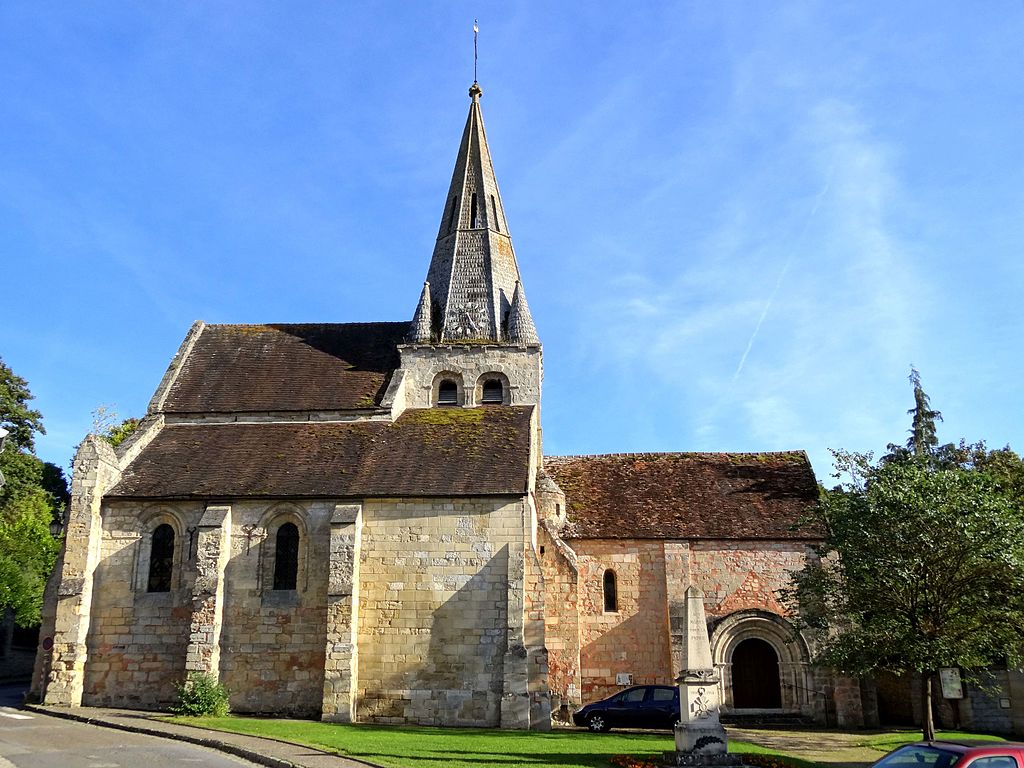
Île-de-France
8. Jambville to Conflans-Sainte-Honorine
Medium
6h30
26km
+616m
-705m
Step
Embed this item to access it offline
This stage offers you moments in the forest that will be increasingly rare as you get closer to the edge of the Seine with pretty residences and a denser population. The town of Conflans-Sainte-Honorine with its marina has a reputation as an ideal town for you to judge.
10 points of interest
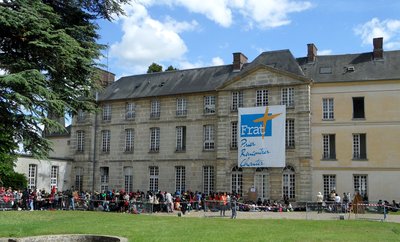
Château de Jambville, lieu de rencontres chrétiennes - FRAT en Ile-de-France HistoricalJambville Castle
Jambville Castle is based on 13th century vaulted cellars and replaces a first castle from the 14th century.
The second castle was built in the 17th century around the tower with a spiral staircase. In front of this building was a French garden. In the 1760s, the de Maussion family, whose arms still decorate the castle, bought the property and transformed it entirely.
The castle was enlarged and the main body was built with its two pediments. The building is then oriented north-south. The French garden is replaced by an English park decorated with follies (decorative monuments) such as the Greek temple, the pheasant pond or St Damien. The avenue of lime trees is then created to give this magnificent perspective.
Today the castle has been a training centre for the Scouts and Guides of France since 1952.
Église Saint-Sulpice à Seraincourt - Monumentum.fr TouristSaint-Sulpice Church à Seraincourt
The church, a listed municipal building, is remarkable for its vaulted choir and barrel vault (late 11th century) and for the geminated bays of the bell tower (12th century) topped by a gabled roof.
This Romanesque bell tower, one of the oldest in Vexin, rises above a ribbed vault on four massive pillars decorated with variously sculpted capitals.
The 13th and 14th century chapels, the nave rebuilt between 1857 and 1863, illustrate the developments linked to the development of the history of the village.
Placed under the name of Saint-Sulpice, the parish was served until 1793 by the canons regular of the Order of Premonstratensian founded by Saint Norbert. At present it is part of the parish sector of Fontenay-Saint-Père, diocese of Versailles.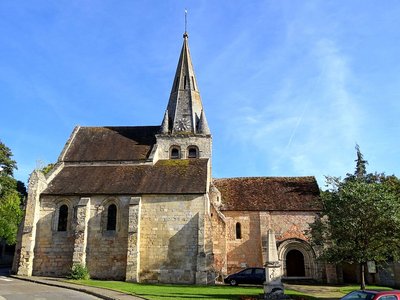
Église Notre-Dame de l’Assomption à Gaillon-sur-Montcient - Association Colomban en Brie TouristNotre-Dame Church de l’Assomption à Gaillon-sur-Montcient.
According to tradition, this church was built by the Count of Meulan, Galeran II. He was one of the faithful followers of the King of England. In 1204 King Philip II Augustus confiscated the county, which was attached to the Royal Estate.
The building built in the 12th century was enlarged in the 13th century. At first glance you can see a stocky ensemble that partly enshrines the bell tower surmounted by a stone spire. Over the centuries the works follow one another but the nave remains undersized in relation to the whole.
The church has kept its Romanesque portal, without lintel or tympanum. Inside you can admire the baptismal font (12th century), a Virgin and Child and a Christ on the Cross (16th century).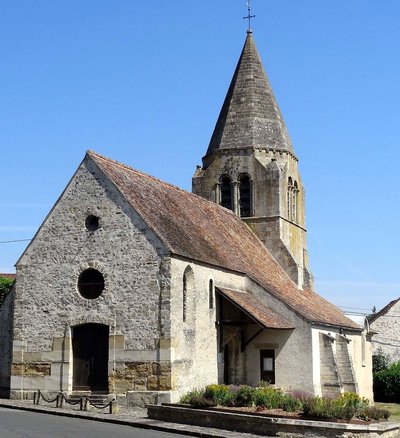
L'église Saint-Nicolas de Tessancourt-sur-Aubette - Association Colomban en Brie TouristSaint-Nicolas Church de Tessancourt-sur-Aubette
The church would date from the 11th century, it remains its bell tower built on four square pillars with vaulted edges and formed by a stump of stone topped by a stone spire. The single nave is not vaulted and the apse with cut-off sides vaulted in cul-de-four gives to the whole an extremely sober architecture. Around the middle of the 12th century, the nave was enlarged by the addition of aisles to the north and south.
The squat Romanesque bell tower seems unfinished: it seems to lack an octagonal floor. Initially the bell tower was free to the north and south. In the 16th century, a seigneurial chapel of an indefinable style was added to the south, and later a sacristy was built to the north. It is above all the interior of the church that retains all its authenticity.
The church's furnishings are worth a visit, such as the sixteenth-century baptismal font and a very extensive statuary.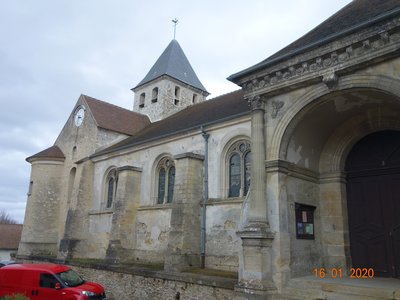
L’Église Notre-Dame-de-l ’assomption à Evecquemont - Association Colomban en Brie TouristNotre-Dame-de-l ’assomption Church à Evecquemont
Nothing remains of the Benedictine priory and its church founded in the 11th century by the monks of Fécamp except for the foundations found during the 1978 restoration. The building underwent various alterations in the 13th, 16th and 19th centuries.
The most interesting part is the entrance. Built around the second half of the 11th century, and attributed to Nicolas Mercier. This porch is framed by two columns surmounted by capitals decorated with acanthus leaves, enhanced by a pediment which was decorated with a frieze, now hidden under a layer of plaster.
Inside, the Renaissance-style aisle was built around the middle of the 16th century. On one of the pillars is the monogram of Francis the First (salamander).
L’église et la ville de Triel-sur-Seine - Association Colomban en Brie TouristSaint-Martin Church à Triel-sur-Seine
In the first century AD, Saint Nicaire, a disciple of Saint Denis, lived in our region to evangelize the inhabitants of the banks of the Seine at Conflans-Sainte-Honorine and Mantes-la-Jolie via Triel (Triellum in Latin), proving the origin of the commune.
Triel would draw its name from the existence of three islands formed by the course of the Seine at the place where the Roman road crossed the river.
The church, begun under Saint Louis in the mid-13th century, stands on the foundations of an older cult building, as evidenced by the discovery of Merovingian sarcophagi that can be admired at the Museum of National Antiquities in St Germain-en-Laye. The nave and its two aisles, the transept and the two bays that precede the ascent to the choir remain from this primitive construction.
The restoration undertaken in the 16th century with the construction of the choir, above the "chemin du Roy" in order to leave a passage for pedestrians, as provided for in the royal edicts, gives it this original character that can only be found in two other churches in France.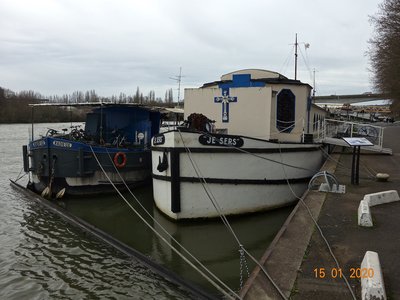
La péniche « je sers » transformée en chapelle - Association Colomban en Brie CulturalQuai de seine, the theater and restaurant barges, the chapel barge at Conflans-Sainte-Honorine
The important river activity explains the presence on the quays of barges "restaurant," or "theater", and also the barge "je sers". This barge built in concrete in 1919 was first used to transport coal. It became the headquarters of the mutual social assistance of the bargees in 1935, then the floating bargemen's chapel in 1936, and is now also a place of reception for migrants, especially Tibetans, since 2014. The nearby school was initially reserved for bargemen's children.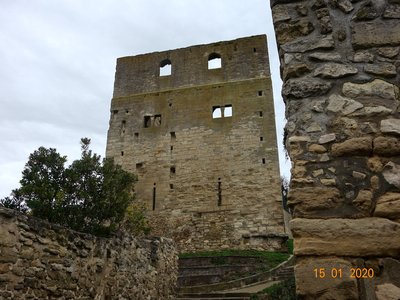
La Tour Montjoie à Conflans-Sainte-Honorine - Association Colomban en Brie HistoricalTour Montjoie à Conflans Sainte-Honorine
The name of this dungeon would come from "Mons Jovis" (Mount Jupiter), designating the rocky spur on which it rests, ideal for watching over the Seine. Built at the end of the 11th century on the remains of a wooden fortification burnt down during a feudal war, this tower has imposing dimensions (15 metres high and three levels) and is a major element of the landscape of Vieux-Conflans. It is a precious witness of the first generation of stone castles in Île-De-France, one of the most beautiful specimens of a quadrangular Romanesque keep remaining in the region. Deprived of a roof in the 16th century, it remained the seat of the barony of Conflans until the Revolution. The west and south sides have geminated windows, very rare in the military architecture of that time. The tower was donated to the town in 1931 by the Cornudet family.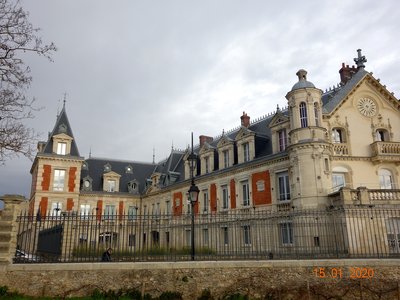
Château de Conflans-Sainte-Honorine et Musée de la batellerie - Association Colomban en Brie HistoricalCastle of Conflans-Sainte-Honorine
The Château du Prieuré belongs to the "upper" town of Conflans, with its Saint-Maclou church and the Montjoie tower, an 11th century keep.
It is located on the site of a former priory of Saint Honorine (hence its name) founded in 1080 by Ives III de Beaumont, known as "le clerc". Only the 13th century cellar remains.
The priory is very prosperous, the relics of Saint Honorine being the subject of a very popular pilgrimage (hence the name of the town). It was sold as national property during the Revolution. Jules Gévelot, a wealthy industrialist, creator of the famous brand of hunting cartridges that bears his name, deputy of the Oise and mayor of Conflans-Sainte-Honorine, bought back the various lots and rebuilt the religious estate. Then, from 1865, he redeveloped the buildings and the park as a personal residence in the Napoleon III style, as we see it today.
The property was purchased by the commune in 1932.
Today the castle is home to the inland waterway museum.
Website of the Inland Navigation Museum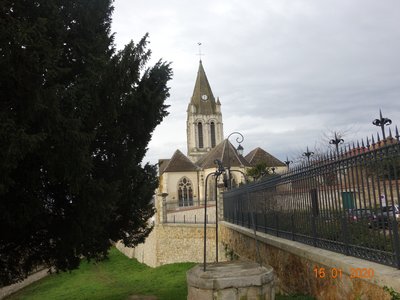
Église Saint-Maclou à Conflans-Sainte-Honorine - Association Colomban en Brie TouristSaint-Maclou Church in Conflans-Sainte-Honorine
The construction of the church dates back to the 11th century and several restorations and extensions followed one another until the 19th century. Around 1800, the relics of Saint Honorine were transported there. Relics to which were added those of Saint Samson and Saint Margaret. The building has a Gothic nave with aisles separated from the choir by an imposing 12th century span supporting the bell tower, whose spire was struck by lightning and rebuilt in 1927. Major restoration work has been undertaken in recent years on the east and west facades, the porch, as well as the sculptures, stained glass windows, bedside table and woodwork.
Description
From the square in front of the church of Jambville, take the rue de Moustier, on the right, sentier du Marais Du Val, rue du clos Denise in Seraincourt, cross the rue des Vallées, rue de la Bernon.
Red and white signs to Conflans-Sainte-Honorine
Red and white signs to Conflans-Sainte-Honorine
- Left rue de la Bernon, cross the D43, opposite chemin des Carrières, at the left turn continue straight ahead on a dirt road, chemin Mantois stay on your left, at the crossroads of the 4 roads in the woods second road on your right
- At the crossroads on the right stay on your left, in Gaillon-sur-Montcient, at the crossroads straight ahead rue de la Cavée, on the right Grande Rue, on the left pass in front of the church, rue du point du Jour, on the left rue des Bouts de la Vallée, immediately on the right, sentier de la Tessancourt straight ahead at the left bend, continue on dirt road, cross D28
- In Tessancourt-sur-Aubette, turn right on chemin de Gaillon, straight ahead on place de l'église, left on chemin du Moulin Brûlé, turn right on rue du Moulin Brûlé, at the intersection right on chemin de la Mareche, left on rue du Pré aux Loups, cross the Vieille Route de Meulan in sagy, straight ahead at the following crossroads
- Cross with caution D 922, rue Maurice Dubois in Évecquemont, left rue Edhémar straight ahead to cross the village at 2 rue Adhémar, take the second street on the left, rue des Bouillons, chemin des Bois Bouillon, at the fork in the road on the right, chemin du Bois de bouillon.
- In Vaux-sur-Seine cross rue du Moulin à Vent opposite rue Armand Raulet, turn right on chemin du Plant de Fortvache, chemin des Fortes Terres, at the crossroads with a dead end sign turn right, chemin des Jeunes Plantes, continue on the pedestrian path, turn right on rue Auguste Dolnet and left on Sente Quiéte, continue straight on boulevard d'Angibout.
- At the intersection on the right rue du temple, before the railway bridge on the left rue du Bel Air, turn left on chemin des Feuillerets, turn right on chemin des Carrières et du Bel-Air, continue on dirt road,
- At the crossroads on the right chemin des Carrières et du Bel-Air, chemin des Haumonts, in front of the first house on the right turn left Première Sente des Haumonts, at the crossroads Sentier des Hautmonts, straight ahead chemin des Mareilles, slightly left chemin de Beauregard, Grande Sente des Beauregards
- In Triel-sur-Seine, first street on the right rue des Bois, at the crossroads straight ahead place des Marronniers, on the left crossroads D2 rue de la Chapelle, take the stairs immediately on the right rue Octave Mirbeau, stay on your left at the crossroads rue Octave Mirbeau, at the crossroads straight ahead stay on rue Octave Mirbeau, at the end of rue Octave Mirbeau on the right go down rue des Picardes
- On the left grassy path along the property at 1 Première Sente du Battoir, straight ahead, take the stairs on the right, left on avenue de la Forêt, left on Sente des Marais, go down towards the Chanteloup-les-Vignes subdivision, left on Grande Sente des Marais, right at the intersection of rue des Marais, left on rue de Pissefontaine, left in front of the church, then slightly right on rue de l'Abreuvoir at the crossroads, straight ahead on rue du Chapitre.
- Third street on the right Grande Sente des Fontaines, continue on a dirt road straight ahead in Chemin de la Croix Saint-Marc for 20 meters on the left Chemin de la Croix Saint-Marc housing the water treatment plant, on the left Sente des Beaunes on the right rue des Coteaux, on the right rue de l'Hautil, first street on the right Sente des Cures, on the left chemin Sentes des Beaunes, cross the D 55 take in front of you Sente des Barils, on the right on sente des Barils, continue rue des Barils
- Cross the avenue des Coutayes take the road to the railway on the left take the bridge over the railway on rue de l'Hautil, on the right go along the cemetery and the railway, Sente Rurale du Cimetière, take on the left impasse des Barils, rue Marcotte, on the left rue des Courcieux, rue de l'église go in front of the church, on the right in front of 34 rue de l'Église, on the left boulevard Noël Marc, stay on the bank of the Seine, avenue du Général Charles-de-Gaulle.
- Take the bridge of Conflans to cross the Oise, go down on the bank of the Seine, Cours de Gimay, chemin de Touage, promenade François Mitterrand, at the river stop on the left take rue René Albert, at 39 rue René Albert take the stairs on the left, on the right rue de la Savaterie, go towards the Saint-Maclou church you have arrived.
- Departure : Notre-Dame Church de l’Assomption, 78 440 Jambville
- Arrival : Saint-Maclou Church, 8 Place de l’Église, 78 700 Conflans-Sainte-Honorine
- Towns crossed : Île-de-France
Altimetric profile
Report a problem or an error
If you have found an error on this page or if you have noticed any problems during your hike, please report them to us here:







